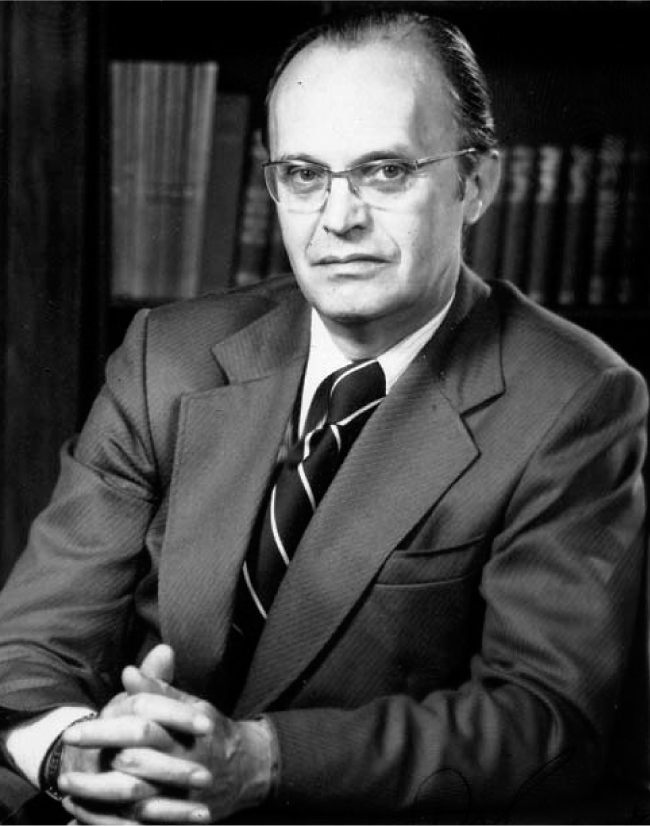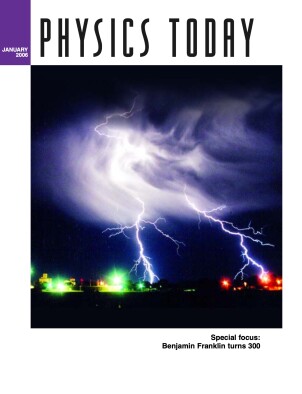Paul Aveling Redhead
DOI: 10.1063/1.4797278
Paul Aveling Redhead, one of the founders of vacuum technology and surface science, died on 9 July 2005 in Ottawa, Canada, after a long battle with heart disease.
Born on 25 May 1924 in Brighton, England, Paul received his BA from Cambridge University in 1944 and joined the British Department of Naval Ordnance, where he worked on tubes for microwaves and proximity fuses. After World War II, he undertook research on experimental vacuum tubes for the Services Electronics Research Laboratories. He was awarded an MA from Cambridge in 1948 for that work; in 1969 he received his PhD from Cambridge.
In 1947 Paul joined the division of radio and electrical engineering of the National Research Council of Canada in Ottawa to develop key radar components. Until 1970 he led a distinguished team at NRC in establishing the methods and basis of both ultrahigh vacuum technology—which was to have such impact in many areas, including particle accelerators—and the field of surface science. After a three-year stint in research planning for NRC, he became director of the division of physics in 1973. He believed that the management of science was an important responsibility of scientists. In his last three years at NRC before retirement, he was a key member and secretary of the science and technology policy committee. He also served for many years on the NRC management committee, its tactical committee, the advisory board of TRIUMF, and the advisory committee for fusion-related research. He officially retired from NRC in 1986 but continued to work from an office there.
Paul will be remembered for his groundbreaking research in the generation, measurement, and utilization of ultrahigh vacuum, research that paved the way for many other developments in surface science. With NRC colleagues Peter Hobson and Ernie Kornelsen, he coauthored the classic book The Physical Basis of Ultrahigh Vacuum (Chapman and Hall, 1968), the defining book in that field. He developed the magnetron gauge for reliable measurement down to pressures of 10−14 torr, and one version of that gauge went to the Moon in the Apollo missions. He also developed thermal desorption spectroscopy and laid the foundation for electron stimulated desorption. In 1975, he received the American Vacuum Society’s Medard W. Welch Award “in recognition of outstanding current research in the fields of vacuum science and technology, vacuum metallurgy, thin films, and surface science.” He also received the Queen Elizabeth Jubilee Award in 1977 and the Medal for Lifetime Achievement in Physics in 1989, both from the Canadian Association of Physicists.
Paul served as president of AVS in 1967–68 and as editor of the Journal of Vacuum Science and Technology from 1970 to 1975. In 1970, he was awarded honorary membership in AVS. He continued to serve the society in many roles, including as both editor and author in recording historical events that he considered important: Vacuum Science and Technology: Pioneers of the 20th Century (AIP, 1994), History of the American Vacuum Society 1953–1994 (AVS, 1995), and 50 Years of Science, Technology, and the AVS (1953–2003), a special issue of the Journal of Vacuum Science and Technology A, 2003.
The depth of the impact that Paul had over his career is so remarkable that he has left a tangible imprint on a wide range of scientific and technical endeavors involving the use and understanding of high vacuum. There are entire fields of science and generations of scientists that are dependent on Paul’s contributions to the technology of making high vacuum in the laboratory.
During his prolific career as a scientist, technical manager, and historian, Paul had the opportunity to be a mentor for many of his colleagues. We count ourselves privileged members of that group because we had the opportunity to learn from him as our paths crossed in various conferences, committees, collaborations, coauthored papers, and unforgettable chats over a glass of beer. We were very fortunate to have Paul join us in a celebration of his contributions to our scientific community in a special “Symposium to Honor Paul Redhead” organized for the annual AVS symposium in October 2000. He agreed to that celebration if we promised to avoid anything that bordered on being pompous. We could never be pompous when talking about Paul—only grateful.

Paul Aveling Redhead
NRC

More about the Authors
Fred Dylla. 1 Thomas Jefferson National Accelerator Facility, Newport News, Virginia, US .
Bill Westwood. 2Ottawa, Canada .
